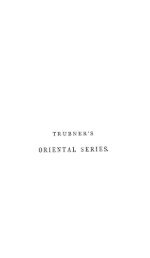Untitled
Untitled
Untitled
You also want an ePaper? Increase the reach of your titles
YUMPU automatically turns print PDFs into web optimized ePapers that Google loves.
1<br />
-<br />
c<br />
102<br />
' NOTES 'ON THE FIRST DISCOURSE<br />
<<br />
# f C<br />
Fakhru'd-Din Mas'dd, first of the Bamiyan line, brother of Husayn<br />
Jahdn-fuz and't father' of odr author's special patron Husamu'd-Bin 'AH,<br />
outlived the year 558/1163, in which, according to the Tabaqdt-i-Ndsir\ 1<br />
^<br />
'ha made war on his nephews Ghiyathu'd-Dirl and Shihab [or Mu'izz]u'd-<br />
Din. The title Maliku'l-JibdJ ("~KJmg of the Mountains") given to him<br />
in the text was common to all the rulers of th$ dynasty.<br />
Shamsu'd-Din Muhammad, son of 'the above-mentioned Fakhru<br />
'd-Din and second of the Bamiyan line, survived at any rate until the year<br />
586/1190, when he aided his cousins Ghiyathu'd-Din and Shihab<br />
r<br />
[or<br />
Sultan-shah ibn Il-arslan ibn<br />
Mu'izz]u'd-Din in their struggle against<br />
Atsiz Khvarazm-shah 2 .<br />
Husamu'd-Din Abu'l-Hasan 'Ali, brother of the above-mentioned<br />
Shamsu'd-Din, was our author's patron to -whom the Chahdr Maqdla is<br />
dedicated, and who must therefore have been living in 5*51-2/11567<br />
when it was written. He is only mentioned in the Tabaqdt-i-Ndsiri<br />
(p. 104) amongs{ the children of Fakhru'd-Din Mas'iid, an4 further<br />
particulars of his life are lacking.<br />
II. The meaning of Tamghaj or Tapghdch.<br />
(Text, p. 9; Persian notes, pp. 92-4.)<br />
Tamghaj is generally explained as the name of a city or district in<br />
China or Chinese Turkistan. In illustration of this view Mirza Muhammad<br />
cites three passages from Arabic writers and some verses by the<br />
Persian poet Mukhtari.<br />
Din Khwarazm-shah<br />
An-Nasawi, the biographer of Sultan Jalalu'd-<br />
3<br />
that it is the custom of the Great Khan to<br />
, says<br />
spend the summer "in Tamghaj, which is the centre of China, and its<br />
environs"; and this statement is quoted by Abu'1-Fida (who, however,<br />
writes the word Tumhaj or Tumkhaj) in his Geography. Al-Qazwini in<br />
his Athdntl-Bild* describes Tamghaj as "a great and famous city in<br />
the" land of the Turks, comprising many villages lying between two<br />
mountains in a narrow defile by which only they can be approached."<br />
Finally Mukhtari of Ghazna, in the course of a panegyric on Arslan Khan<br />
of the Khaniyya dynasty of Transoxiana, speaks of "nimble Tamghaji<br />
minstrels, quick at repartee."<br />
It seems possible, however, that Tamghaj and Vafghach 5 are merely<br />
variants of the Eastern Turkish word Tapghdch, meaning "worshipful,"<br />
"renowned," and used repeatedly in the sense of "Chinese", in the<br />
Orkhon inscriptions of the eighth osntury of our era. In tru's case the<br />
title "Tamghaj (or Tapghach) Khan" commonly assumed by rulers of<br />
the Khaniyya dynasty really signifies "the worshipful Khan," not "the<br />
Khan of Tamghaj"; and the prevalent belief {hat there was a country<br />
called Tamghaj arose from a misunderstanding, and from a false .analogy<br />
with such titles as Khwarazm-shah, which does actually mean "King of ,<br />
Khwarazm." Mirza Muhammad, however, in a lengthy<br />
and learned<br />
< <<br />
1 Ed. Calcutta, pp. 29 et seqq.<br />
2 Ibnu'l-Athir (ed. Tornberg), xiii, 28 ; Tabaqdt-i-Ndsiri, p. 52 ; Lubdbu'l-Alb&b<br />
(ed. Browne), i, 321. v<br />
3 Ed. Houdas, pp. 4-5.<br />
4 Ed. Wiistenfeld, p. 275.<br />
5 For this form see the Persian notes to the text, pp. 151, 1. 3, 189, 1. 12, etc.<br />








![La religione di Zarathustra nella storia religiosa dell' Iran [microform]..](https://img.yumpu.com/15970820/1/151x260/la-religione-di-zarathustra-nella-storia-religiosa-dell-iran-microform.jpg?quality=85)


